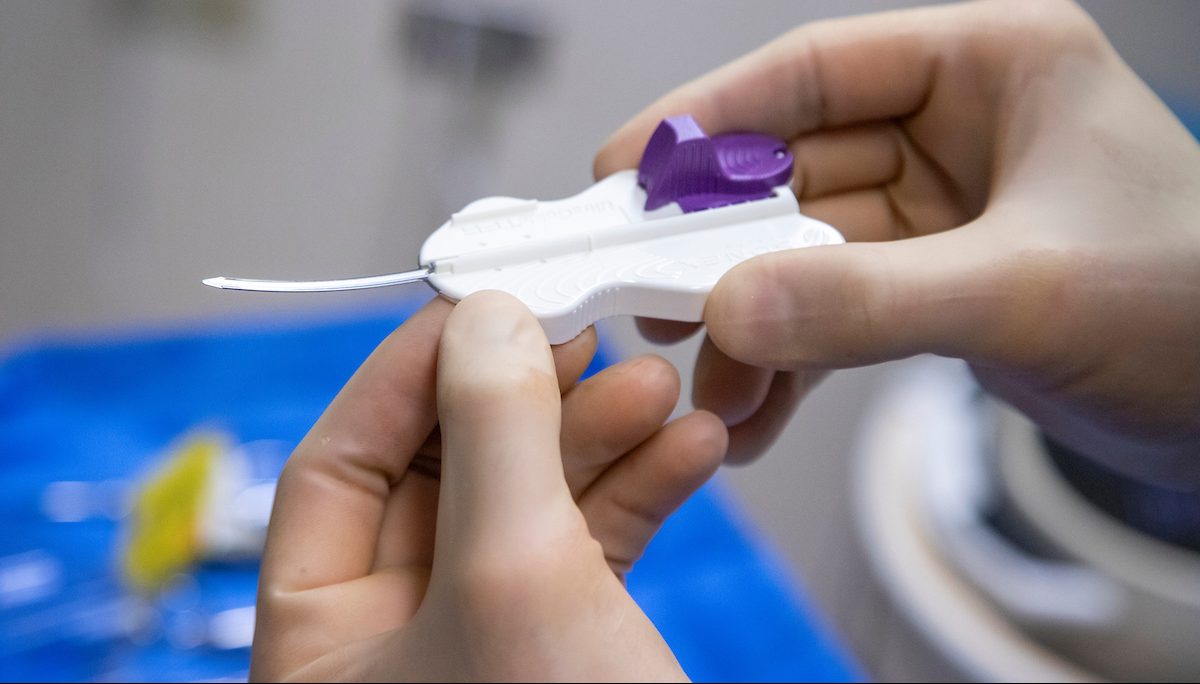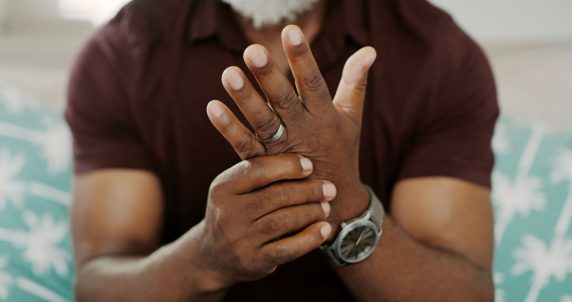
It’s estimated that roughly nine million Americans suffer from a common hand condition called trigger finger. The Hospital of Central Connecticut (HOCC) is using a new device that’s offering patients a minimally invasive way to alleviate the pain and symptoms associated with trigger finger.
> Connect with HOCC’s Hand Center
What is trigger finger?
The tendons in our fingers that allow us to move our hands are accompanied by pulleys, which essentially work as zip ties to keep our tendons close to the bone. Inflammation and swelling between the tendon and pulley can result in trigger finger.
“Trigger finger can occur spontaneously, but people who have repetitive gripping and pulling movements when they work, diabetics. Those with rheumatoid arthritis are at higher risk,” says Jacob Jabbour, DO, hand surgeon at HOCC.
What are the symptoms?
People can have one finger or multiple fingers impacted by trigger finger. People may experience the following issues with their hands:
- Popping or clicking sensation when moving your fingers
- Bump or tenderness in the palm at the base of the finger
- Stiffness in the affected finger
“In some cases, the affected finger may get locked in a bent position and you have to manually force it open to straighten it out, which can be painful and uncomfortable,” says Jabbour.
> Want more health news? Text StartHere to 85209 to sign up for text alerts
What can be done?
HOCC is the first in the state to use a device that helps alleviate these symptoms. It’s called the UltraGuideTFR™ by Sonex Health. It’s used with real-time ultra-sound guidance to perform trigger finger release procedures. “We make a small hand incision and use the device to cut the pulley that’s causing it,” Dr. Jabbour says.
“One you cut that pulley it allows the tendon in the affected finger to glide smoothly and it relieves the symptoms of trigger finger immediately.” The smaller incision means less pain, swelling and scaring for the patient. It’s done under local anesthesia in an office or procedure room. “With this device, people can return to work and normal activities rather quickly. And it doesn’t require pain medication or hand therapy afterwards,” adds Jabbour.
How long does the procedure take?
Dr. Jabbour says the procedure take 10 to 20 minutes for each finger.



